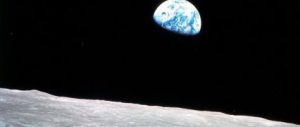Ultimately, lack of water is seen as a threat to peace. From genocide in Darfur to disputes between states in India and the United States, UN secretary-general Ban Ki-moon is one of several global leaders who have warned of further legal and armed disputes over water. Intuitively, it is obvious people will fight over their most precious resource, but so far few conflicts have broken out.
The idea of “water wars” seized the public imagination in 2001 when Marq de Villiers's book of that name was published in the United Kingdom, but the author disagreed with the publisher's choice of title. De Villiers agrees that water is often an underlying cause of tension, but has only identified one water “war”, between Egypt and Sudan. “You cannot do without water, so when shortages pinch, states do co-operate and compromise,” he says.
But if half the world's population lives in water-stressed countries, how do so many — from the breadbaskets of Asia to the sprawling cities in the arid American west — keep watering fields and running taps?
One reason is that water flows uphill to money, as the saying goes. Thus people in oil-rich Kuwait enjoy expensive desalination, while Palestinians suffer daily hardship; tourists in Amman can turn on the tap at any time, while those in the poorest areas of the city have access to water for a few hours each week. As King's College London’s Tony Allan says: “Water shortages don’t pose serious problems to gardeners in Hampshire [an English county] or California homeowners with pools to fill.”
Another answer to the conundrum was identified by Allan, who in the 1960s became curious about why Middle Eastern countries without abundant water supplies were not suffering from a more obvious water crisis. The answer, he realised, was trade: by buying food, water-poor societies were “buying” what he dubbed “virtual water”. They were helped by farmers dumping grain into the world market once subsidies created massive over-supply. “This potential tragedy was motoring on and hit the calm waters of the Americans and Europeans providing food [for the world market] at half cost, and the water contained in that food [was water] they didn't have to find.”
The other answer is that communities around the world have been forced to tap rivers and lakes and aquifers, sometimes millions of years old, far beyond the limit at which they can replenish themselves. Above ground, lakes are shrinking and rivers are being reduced to pathetic flows, or drying up altogether. Below ground, a largely invisible crisis is unfolding as millions of wells have been sunk into aquifers – four million in Bangladesh alone. Many aquifers are replenishable, but not all, and many that can be recharged don't get enough rain to match demand. Sometimes the empty cavities simply collapse, putting them beyond use forever.
In his recent book, Plan B 3.0, Lester Brown catalogues the results. In the breadbaskets of China, India, the United States, Pakistan, Afghanistan, Iran, Saudi Arabia, Yemen, Israel and Mexico, water tables are falling, sometimes by many metres a year. Pumps are being drilled a kilometre or more to find water, thousands more wells have dried up altogether and agricultural yields are shrinking. These countries contain more than half the world's people and produce most of its grain, warns Brown. Meanwhile, almost forgotten amid the human suffering, are the terrible consequences for the natural world: freshwater fish populations fell by half between 1970 and 2000, says the United Nations.
All these dams and irrigation channels and pumps and pipes allow billions of people to run up a gigantic global water overdraft. What worries experts is that there is no sign of humans withdrawing less water.
Two years ago, the International Water Management Institute (IWMI) published a report by 700 experts warning that one in three people were “enduring one form or another of water scarcity”. “Scarcity for me is when women work hard to get water, [or] you want to allocate more but can't,” says David Molden, deputy director of the Sri Lanka-based organisation.
Molden warns that the situation is becoming “a little bit more critical”, because of continuing rising demand for food, the recent boom in biofuels and climate change. To that also can be added another, poignant “demand”: the long-overdue realisation that nature also needs water, which in European and other countries has led to laws to ensure “minimum environmental flows” remain in place.
For food alone, the World Bank estimates that demand for water will rise 50% by 2030, and the IWMI fears it could nearly double by 2050. Whether these crops require rain or irrigation depends on where they are grown, and how much rain there is.
Like a great river fed by many tributaries, water is a conduit for the various effects of global warming: more variable rainfall, more floods, more droughts, the melting of glaciers on which one billion people depend for summer river flows, and rising sea levels that threaten to inundate not just coastal communities but also their freshwater aquifers, river deltas and wetlands.
From the headline figures, climate change should be good news. Crudely, scientists estimate for every 1º Celsius rise in the average global temperature, precipitation will increase 1%, as warmer air absorbs more moisture. The world's total volume would not change, but it would be recycled more quickly, affecting the majority of the world's agriculture, which depends on the volume and timing of rainfall.
Balancing all these impacts, Nigel Arnell, director of Reading University's Walker Institute for Climate Change, calculates that the number of people living in water basins exposed to water stress will rise from 1.4 billion to as much as 2.9 billion to 3.3 billion by 2025, and to perhaps 3.4 billion to 5.6 billion by 2055. In fact, the greatest impact in Arnell's modelling is from rising populations, particularly in China and India, and, globally, climate change actually is reducing exposure to shortages. This may be good news for some, but it masks huge disruption, as some regions fear too much water, while hundreds of millions of people start to run out of water.
It is impossible to attribute one farm's difficulties or one year's rainfall to climate change. But if climate is the statistics of weather, then the rain gauge this year on the farm of Sameeh al-Nuimat, north-west of Amman, is typical of what the experts forecast. Al-Nuimat had noticed a gradual decline in rainfall for years, but this year it dropped off steeply and there was no rain at all in March, a critical time for summer crops. “My father told me he'd never seen such a year,” he says.
Such dramatic events have injected urgency into discussions about Jordan's precarious water supplies, says al-Nuimat, who is also an irrigation engineer at the ministry of agriculture. “Before, when water was available, no one worried about it,” he says. “But now there's interest — every night people speaking, every night debating, at every level, from the farmer to the planner to the politician. As a farmer, I'd like to see drought-resistant crops; from a civil-engineering point of view we should look for mega-projects; and, if you're thinking about global planning, there should be acceptance of people moving from water-scarce regions to where water is available.”
Around the world, the same debates are under way. Rich countries can make significant gains from domestic efficiency, but most of the world's population does not have power showers and swimming pools, or waste great quantities of food. Instead the main focus is on reducing water in agriculture, through more efficient irrigation, by engineering seeds to grow in more arid and salty conditions, and even shifting crops. “If the world were my farm, I'd grow things in different places,” says IWMI’s Molden.
But even benign-sounding conservation is often unpopular. There is widespread resistance to raising prices for water (or energy for pumping) to increase efficiency, suspicion of genetic modification, and reluctance among farmers to abandon water-hungry but lucrative crops when they are struggling to feed their family. “It's a socioeconomic dilemma,” says al-Nuimat. “You can't stop now: it's the source of their life.”
Faced with public apathy and even resistance, responses have tended to focus on increasing supply. For decades the scale of ambition has been like a game of global engineering one-upmanship: rivers have been diverted across countries, pumps sunk kilometres into fossil aquifers, and bigger plants commissioned to recycle or desalinate water. And there is no sign of a let-up. As shortages become more desperate and costs and energy use fall, Global Water Intelligence forecasts that desalination capacity will more than double by 2015, and the potential to increase wastewater recycling is enormous, being only 2% of volume.
But huge costs, environmental concerns and public distaste for drinking their “waste” has forced many communities to reconsider simpler, traditional methods, too. Some of the ideas the earliest farmers would have recognised: tree replanting, ripping out thirsty non-native plants, stone walls to hold back erosion, and rain harvesting with simple ponds and tanks. Some have even urged a return to more vegetarian diets, which at their extreme demand only half the water of a typical American meat-eater's. This is, according to Lord Haskins, the former chairman of Britain's Northern Foods group and a government adviser, “the most virtuous and responsible step of all”.
And when all options are exhausted at home, countries have another option: to import water in food and even industrial goods. Political meddling with subsidies makes trade a controversial “solution”, but by favouring regions with a “competitive advantage” in water it can work. Globally the IWMI estimates irrigation demand would be 11% higher without trade, and quotes a projection that imports can cut future irrigation by another 19 to 38% by 2025. Saudi Arabia has gone further than most, announcing in February that it would stop all wheat production in a few years, though other countries might now be deterred by higher food prices.
Ultimately governments are being forced down several paths at once: to raise prices to reflect the true value of water to humans and the environment, invest in technology to improve efficiency and supplies, engage in more trade, and make peace with neighbours that can hold up incoming water or food. These will only be possible, though, if people can be lifted out of poverty, to afford higher prices, capital spending and imports. “When you diversify your economy you solve your problems,” says Allan.
Looking back at the history of mankind's struggle for enough water, experience suggests the initiative which enabled humans to settle, farm and dominate the planet will provide many solutions. But sometimes we might have to accept defeat.
“On the one hand, you can see this amazing technological ingenuity of humans, which throughout prehistory and history continually invented new ways to manage water supply,” says archaeologist Steven Mithen of the University of Reading. “On the other, the story of the past tells us that sometimes, however brilliant your technological inventions, they are just not good enough, and you get periods of abandonment of landscapes. We have got to be prepared to invest in technology, but also to recognise in some parts of the world there are going to be areas where we're going to have to say ‘enough's enough’.”
First part: Is water the new oil?
www.guardian.co.uk
Copyright Guardian News and Media Limited, 2008
Homepage photo by suburbanbloke




